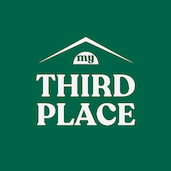Perched high on a Cotswold hilltop, where the winds play across swathes of open grassland and cows roam freely, lies Minchinhampton Common — a place both ancient and alive.
This large communal space, one of the biggest in the Cotswolds, sits on top of a plateau of Jurassic limestone. It’s a stark landscape, with steep sides and breathtaking views. Walk its paths, and you’ll see kite-flyers sharing airspace with skylarks, golfers carefully navigating cowpats, and dog walkers pausing to admire far-reaching views across the Stroud Valleys and stretching all the way to the Severn Estuary.
A Place that Belongs to Everyone
Although the National Trust owns it, Minchinhampton Common offers 600 acres of freely accessible space for everyone. It’s the sort of place where one minute you’re spotting orchids and butterflies, the next you’re playing frisbee or enjoying a cider at The Old Lodge pub – a 17th-century hunting lodge that sits in the heart of the common.
This is nature as a third space, where you can picnic, play, meander, and meet – and it has been that way for centuries.
A Landscape Steeped in History
The story of this common stretches back thousands of years. Small sites of Roman remains have been found, and everywhere you look lie ancient burial mounds — known as round barrows — a reminder of Neolithic and Bronze Age communities long gone. Alongside these, Iron Age earthworks, known locally as the Bulwarks, sweep across the landscape.
A Hilltop Humming with Hobbies
As well as being an obvious local favourite for walkers, you can also ride horses on the common. Furthermore, its open skies and steady winds make it ideal for kite flying, gliding, and even paragliding. And for golfing enthusiasts, the course on the common offers something unique. At one of the oldest clubs in the West of England, a round of golf here means navigating tough natural terrain, windy conditions, and the occasional cow. One Google reviewer aptly called it both ‘rustic and challenging’.
A Common Rich in Life
Minchinhampton Common isn’t just a playground for people — it’s a haven for wildlife. After more than 150 years, Britain’s rarest butterfly, the Large Blue, has returned to these grasslands, thanks to years of patient conservation. Wild thyme also thrives on the slopes, and alongside it, the rare and delicate pasqueflower, which blooms in early spring. These plants support a web of life, from butterflies and beetles to the skylark — one of the Common’s most cherished residents. To keep these unusual and precious species thriving, The National Trust and local wildlife enthusiasts such as the Minchinhampton Walking and Wildlife Group keep a watchful eye on the local flora and fauna.
Cows, Commons and Community
Every May, on what is known as ‘Marking Day’, cows are marked with numbers and released onto the common to graze freely. This custom dates back to ancient commoners’ rights that go back to the days of William the Conqueror in the 12th Century. They amble across roads, wander through car parks, and occasionally peer through pub windows — a reminder that this is their home too.
These grazing rights aren’t just a quaint tradition, they are vital to the health of the land. They maintain the grassland, making this a collaboration between people, animals, and land that quietly continues, year after year.
Dancing and singing on Ancient Ground
The Common is also a ceremonial landscape – and has been for millennia. From time to time, it plays host to Boss Morris, a group of female creatives who have breathed new life into Morris dancing. You might have seen them on Charlie Cooper’s Myth Country, a BBC series about ancient British traditions. With elaborate masks and backed by professional musicians, they have led processions across the common and celebrated times of the solstice.
For singing enthusiasts, community choirs gather in small towns around the common. Known as The Common Voices, these groups aim to ‘enjoy singing in a relaxed way and to build supportive and inclusive communities’.
Plus, every year, the small yet magical Giffords Circus pitches its tents on the common. They are described as ‘a carnival of fun, silliness and breathtaking skill, and enchantment.’
A Common with Uncommon Charm
In a world that often feels increasingly fenced off, the Common remains open. Indeed, only 3% of England is common land, and this includes huge areas such as Dartmoor, The Lake District, and The Yorkshire Dales.
Minchinhampton Common is one of those rare places that feels unchanged yet constantly alive. It holds history in its soil, offers activities for all, and adapts quietly to each season, each visitor, and each passing herd. It’s a reminder that third spaces don’t have to be built. Sometimes, they’ve just always been there.




Comments